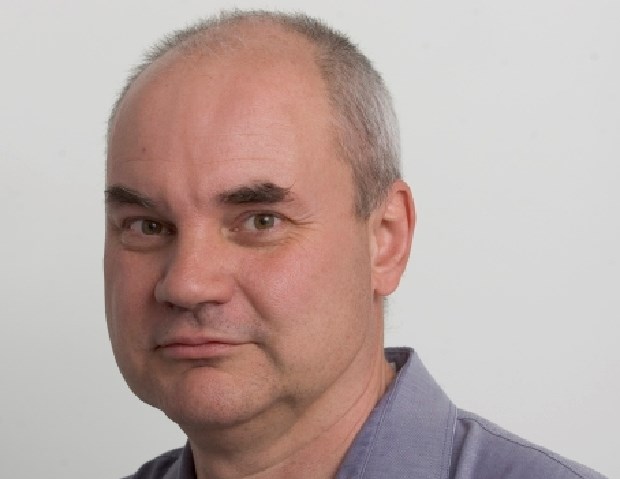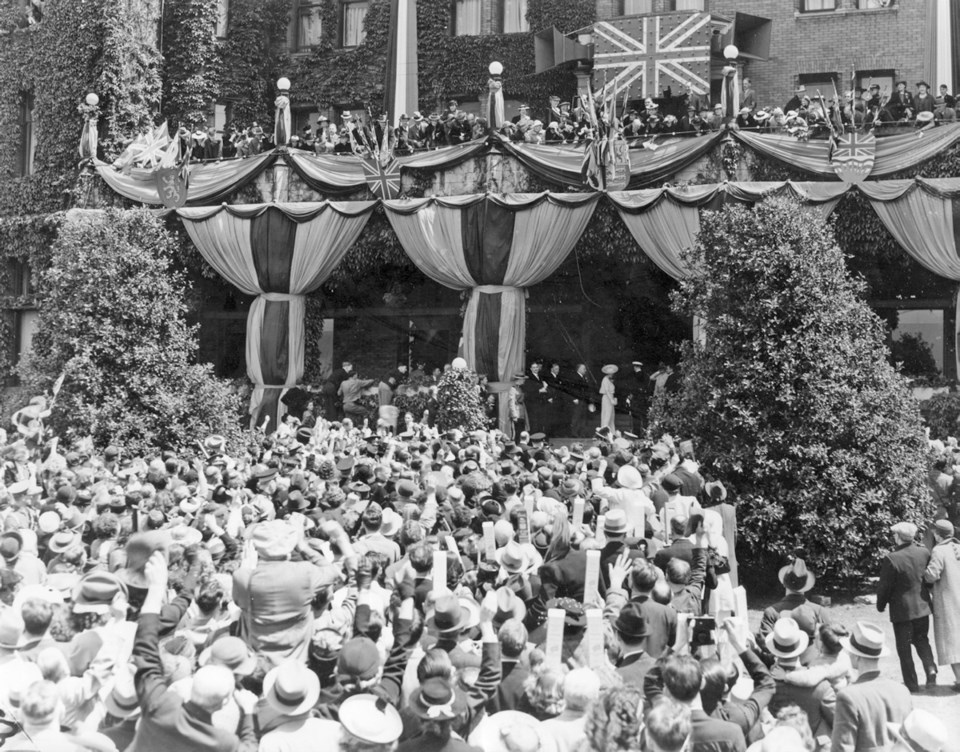 They shot a Disney movie at Royal Roads on Monday. Colwood’s fairy-tale Hatley Castle has long been irresistible to those filming fantasies: Deadpool, The Descendants, Smallville, some of the X-Men movies. …
They shot a Disney movie at Royal Roads on Monday. Colwood’s fairy-tale Hatley Castle has long been irresistible to those filming fantasies: Deadpool, The Descendants, Smallville, some of the X-Men movies. …
With Kate and William coming to Victoria this week, it’s worth recalling how a real-life fairy tale almost came true there, how Royal Roads almost became a residence of the Royal Family.
Here’s the question that has never been definitively answered, though: were the king and queen thinking of Hatley as a home for themselves, or merely as a place to stash the king’s black sheep brother?
The tale goes back to 1939 when, with war brewing in Europe, King George VI and his wife Elizabeth — whom you might recall as the Queen Mother — visited Victoria.
While here they spent a couple of hours picnicking on sandwiches, scones and Thermoses of tea on the lawn of Hatley Park, which was then unoccupied but still owned by the Dunsmuir estate. ‘‘After tea the King and Queen went for a long walk through the estate, visiting the Japanese garden displaying iris and wistaria, and the glen where a little stream runs through patches of wild flowers,’’ the official history of the 1939 royal tour reported.
The royals were quite taken with the place — though exactly how taken didn’t become clear until the posthumous publication of the diaries of Canada’s Second World War prime minister, William Lyon Mackenzie King. (These are the same diaries — which can be found on microfiche at the UVic library — that revealed that for 21 years Canada was led by a man who consulted his dead dog, Pat, when making major decisions.)
The diaries include details of an August 1941 visit with the king and queen at the royal estate at Balmoral, Scotland. By that time, Ottawa had bought Hatley Park for $75,000 (a pittance even then) and converted it into a school for naval officers.
“At one stage, [the king] asked me about what had become of the Dunsmuir property,” Mackenzie King wrote. “I told him of the government having purchased it and of it being used for naval purposes. I could see what he had in mind was the possibility of making a sort of Canadian residence for the King.”
But the diary then hinted at another possible motive. The prime minister wrote that as he prepared to leave Balmoral, ‘‘The King asked the Queen if she had spoken to me about — then stopped. The Queen picked up the conversation and said ‘The Duke of Windsor’s coming to Canada.’ ”
The duke was George’s brother, who had ruled as King Edward VIII before abdicating the throne to marry American divorcee Wallis Simpson. Not only had he caused a scandal and constitutional crisis, but he was also seen as too chummy with the Nazis.
By 1941, he had been shoved off in a corner as governor of the Bahamas, where — as Mackenzie King put it — he was hanging out with ‘‘a bad lot of Americans.” And now, the king and queen seemed worried that the duke and duchess would sow discontent while visiting Canada.
On both days of Mackenzie King’s visit to Balmoral, the topic of Hatley Park followed discussion of the uncomfortable relationship with the ex-king and his wife, whom the queen described as a bitter woman who “would do anything to make trouble,” according to the diary.
Mackenzie King offered the king and queen his backing. “I then said that when the war was over we would see them both in Canada again and referred to the Dunsmuir residence. The King mentioned that we had been speaking of it and seemed to think that it would be nice if the [governor general] could have a residence of his own in B.C. rather than staying with the lieutenant governor. I said I thought it would make a fine Canadian residence for the King and Queen themselves, that we would welcome the opportunity of arranging it to that purpose.”
OK, so Mackenzie King liked the idea of a Canadian version of Windsor or Balmoral in Colwood, but the intentions of the king and queen are hazier.
Were they merely thinking of an out-of-the-way corner of the empire in which to park the trouble-making Windsors, or were they actually looking for a place from which to reign should Britain be overrun by Germany?
Some accounts say Ottawa had a royal refuge in mind when, with the war going badly, it bought the Royal Roads property in 1940, but that the idea of moving the king, queen and their two daughters there was eventually rejected due to the potential damage to British morale.
It’s also said that the king and queen resisted political pressure to move to Canada. To quote Elizabeth: “The princesses cannot go without me. I cannot go without the king. And the king will never leave.”
So resolved, her unflagging grace made her an inspirational figure throughout the war, to the point that Adolf Hitler called her the most dangerous woman in Europe.
As for the king’s brother, he rode out the war in the Bahamas — leaving it up to Disney to provide the fairy tales at Royal Roads.



